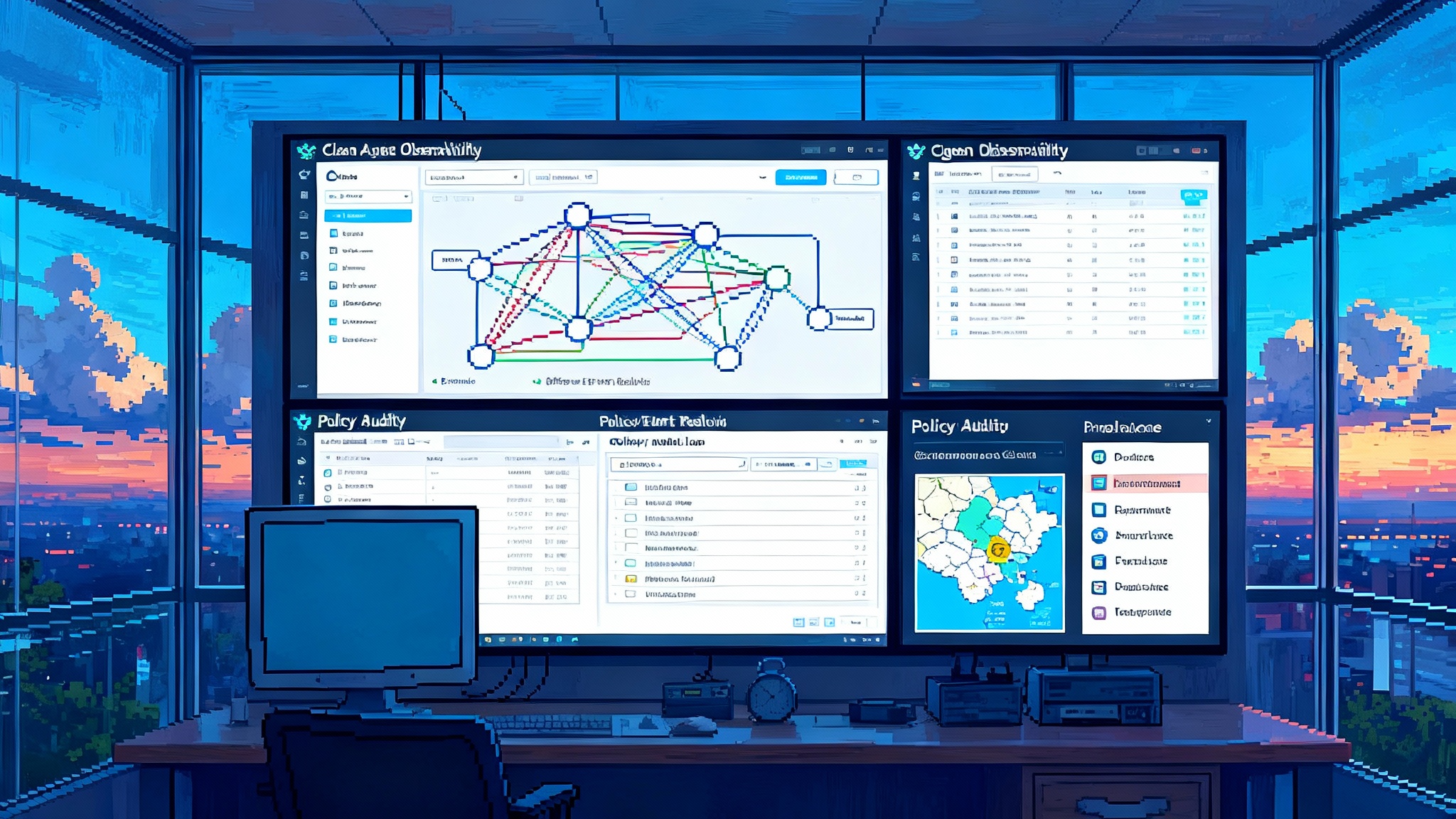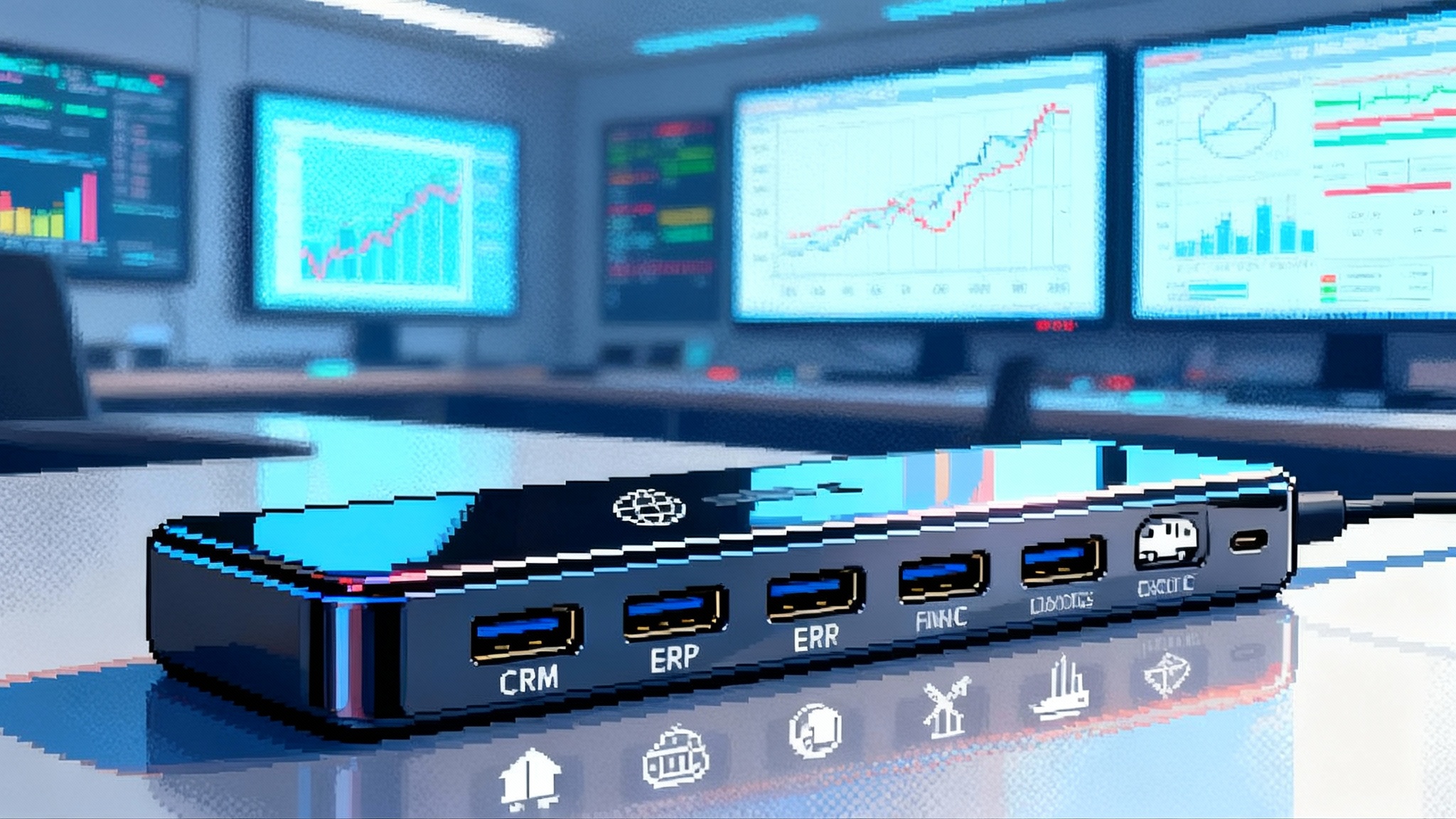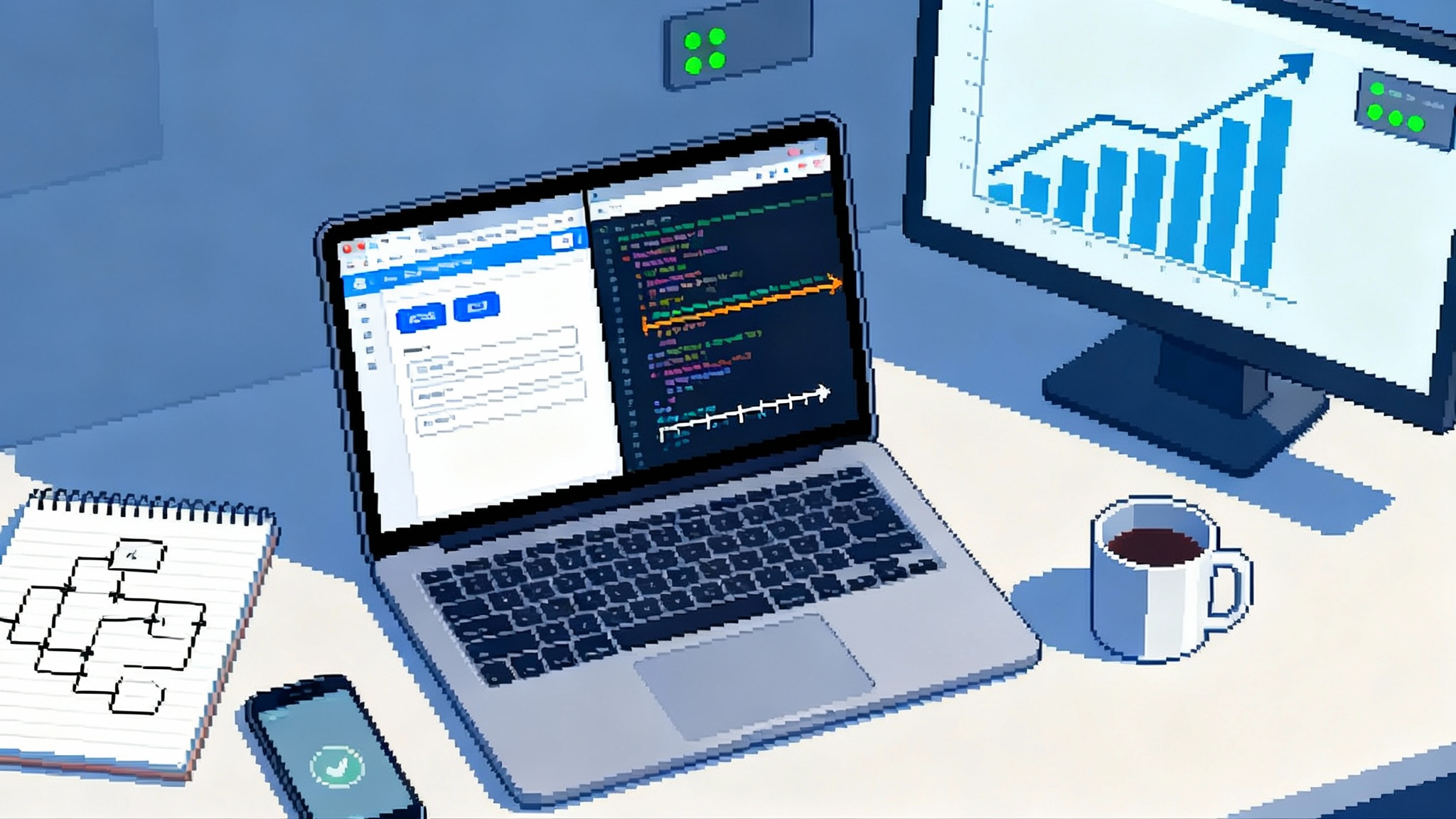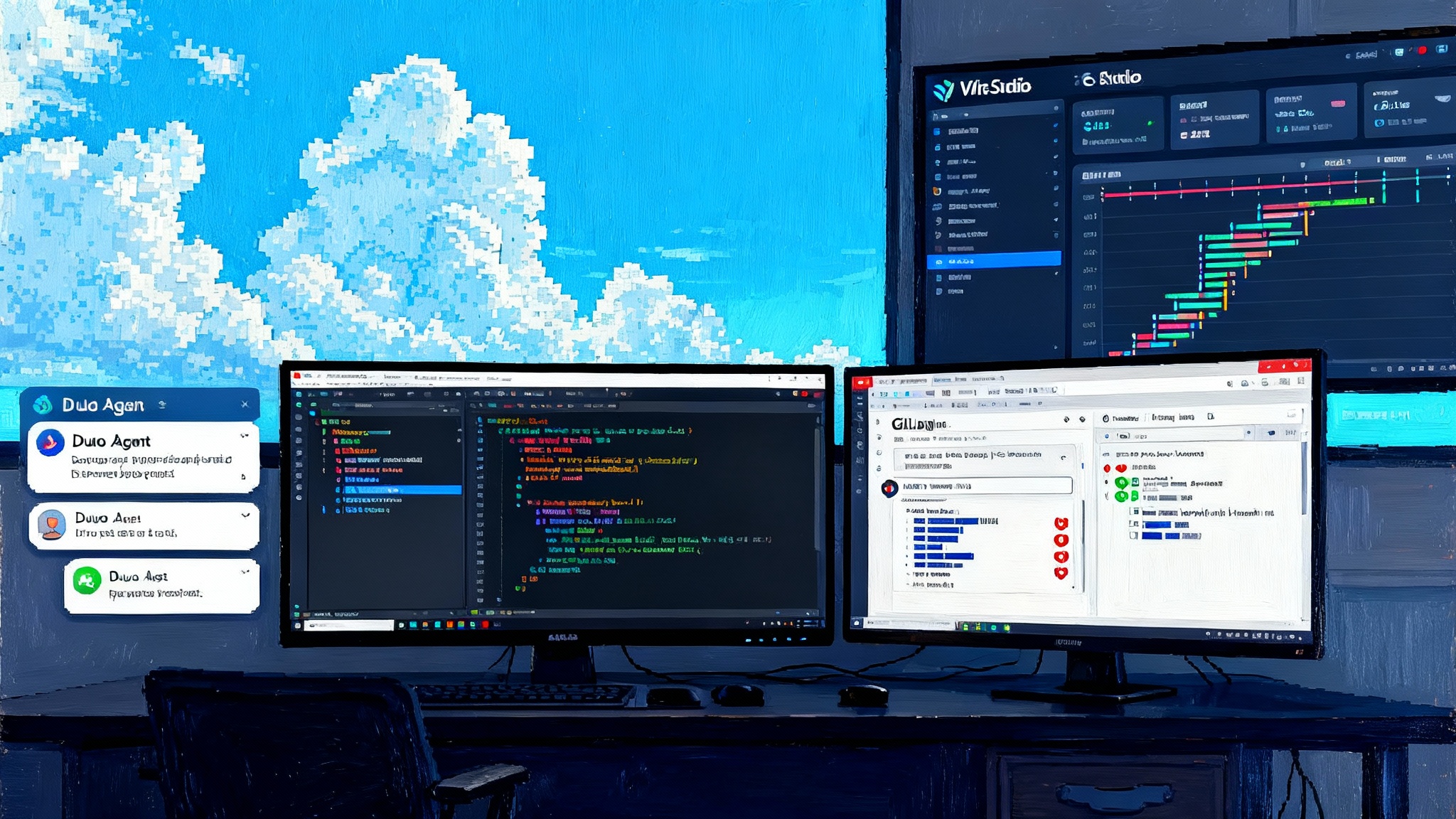Agentforce 3 Makes AI Agents Production Grade for Enterprises
Agentforce 3 turns AI agents into accountable, production-grade services with a Command Center for observability, grounded citations, automatic model failover, and FedRAMP High. Here is the playbook to adopt it.

The SRE moment for enterprise agents
For two years, most enterprises have treated AI agents like promising interns. They could draft, triage, fetch, and even close simple loops, but leaders hesitated to trust them with production outcomes. That hesitation is fading. With Agentforce 3, Salesforce is not just shipping features. It is asserting that agents can be measured, governed, and depended on like any other critical service. In its announcement, Salesforce announced Agentforce 3, highlighting an observability Command Center, web-grounded responses with inline citations, automatic model failover, and availability in environments meeting FedRAMP High controls.
If the last wave was about proving that agentic workflows can complete real work, 2025 is about making those workflows safe, reliable, and auditable at scale. This is the Site Reliability Engineering inflection point for agents. The same disciplines that modernized web services now apply to a runtime that plans, reasons, and acts.
Why observability is the first unlock
When the industry moved to cloud services, teams learned that logs and dashboards were not nice-to-have. They separated guessing from knowing. Agents are no different. A Command Center that traces each step, summarizes cost, and explains decisions turns opaque behavior into visible operations.
Think of it as installing a flight data recorder in every agent. Without step-by-step traces, teams cannot answer simple questions. Which prompt version reduced handle time yesterday? Which tool integration started failing after a vendor changed an endpoint? Where did accuracy or deflection rates deviate from the goal? Centralized observability brings those questions into view so you iterate with evidence, not intuition.
The golden signals for agents
Site reliability teams track latency, traffic, errors, and saturation. For agents, extend that playbook with signals that tie directly to business outcomes and safety:
- Task success rate: percentage of runs that complete the intended business outcome, such as a case resolved or an invoice generated.
- Factuality confidence: a composite metric from human judges or automated checks that flags unsupported or hallucinated statements.
- Guardrail adherence: share of runs that remain within policy, including data access scopes and safe output filters.
- Cost per completed task: total model tokens, tool calls, and compute divided by successful outcomes.
- End-to-end latency percentiles: P50 and P95 from user request to outcome, not just model response time.
- Human assist rate: fraction of runs escalated to people, plus mean time to human response.
- Regression alerts: automated detection of statistically significant drops in any of the above.
These metrics enable practical service level objectives that non-technical stakeholders can support. A support triage agent might target a weekly 95 percent task success rate, a 30 second P95 latency, and a human assist rate under 10 percent. Put those targets, error budgets, and current performance where everyone can see them.
Governance you can prove, not just promise
Trust is necessary, but it is not a control. Agentforce 3 adds web search as an optional grounding source and shows inline citations in responses. That means a supervisor can trace where a claim came from, which encourages a habit of asking why the agent believes something and verifying the trail. It does not make every answer correct. It makes every answer accountable.
Governance also requires repeatable controls. In practice that means:
- Explicit scopes for data and tools: define what customer records, knowledge bases, and external services an agent can access, then enforce those scopes through policy.
- Versioned prompts and skills: treat instructions and actions like code with changelogs, tests, and approvals.
- Testing before traffic: run agents against a bank of synthetic and red-team scenarios before letting them touch production records.
- Audit-ready logs: capture prompts, intermediate reasoning artifacts where policy allows, tool inputs and outputs, and the final message with its citations.
For public sector teams, authorization matters as much as functionality. Agentforce for Government Cloud Plus is authorized at FedRAMP High, which is the bar many agencies require for systems that process high impact data. That expands where mission work can safely use agents.
Resilience becomes a feature customers notice
Agents will fail in familiar and unfamiliar ways. A model endpoint slows down. A tool provider returns a 500 error. A retrieval index drifts as product catalogs change. Agentforce 3 bakes in a reliability pattern the web era learned the hard way. If a primary model provider degrades, automatic failover can shift traffic to a secondary model with acceptable quality and latency. Users notice a graceful slowdown rather than a complete outage.
Resilience goes beyond the model tier. Reduce single points of failure across the whole plan, reason, and act loop:
- Dual tool paths: back up critical actions with a second integration or a manual form fallback.
- Idempotent actions: design actions so they can be retried safely when a step fails midway.
- Dead letter queues for steps: persist failed steps with enough context to replay them after the incident.
- Policy-aware retries: escalate to a human on repeated failure rather than letting an agent loop.
- Chaos drills: periodically disable a tool or inject a controlled error to ensure failover and escalation work as designed.
The marketplace is the new toolbox
Enterprises do not want to build every tool integration from scratch. AgentExchange provides a marketplace for partner-built actions, topics, and templates that plug into Agentforce. The practical effect is faster assembly from audited components rather than custom wiring for each part. That shortens time to value and improves consistency across deployments. Salesforce detailed this shift in its AgentExchange partner marketplace announcement.
Marketplaces also drive standardization. Built-in support for emerging interfaces like the Model Context Protocol means agents can connect to a growing ecosystem of tools and data servers through a common surface. Standardization reduces the cost of interoperability and simplifies monitoring because every tool interaction emits the same classes of signals.
If you want to see how other platforms are converging on enterprise-grade runtimes, compare the Agentforce approach with Google’s push in Vertex AI Agent Engine’s September leap and Amazon’s work in AWS AgentCore’s September update. Different vendors, similar north stars: observability, governance, and controlled degradation.
A concrete example: from outage to outcome
Imagine a retailer that uses an order-resolution agent to locate late shipments and issue refunds. Early on a Monday, latency spikes. The Command Center flags rising P95 times and a dip in task success. Automated policy routes new sessions to a backup model while traffic is shed from the primary. Tool traces point to timeouts in the carrier tracking integration.
An on-call operator checks the runbook. They enable the fallback path that asks customers to paste a tracking number, then queries a second carrier status endpoint. The agent continues to include citations for its refund policies and carrier advisories. Support maintains response speed. Finance sees a 3 percent increase in refunds that morning, but the cost dashboards show only a modest rise in per-task spend during failover.
By lunch, the vendor outage clears. The team reverts traffic to the primary model and turns off the manual fallback. All affected runs remain auditable. The incident timeline lists the failover event, the temporary policy change, and the precise version of the refund policy used. The result is not perfection. It is controlled degradation and recovery, which is what users expect from a production service.
What builders should prioritize now
If you are building on Agentforce 3 or planning a migration from pilots, focus on five priorities.
1) Define service level objectives the business cares about
Service level objectives for agents must tie to outcomes that leaders already track. For sales assistance, measure meetings booked per hour of agent time, pipeline accuracy, and data hygiene for opportunity updates. For customer service, focus on first contact resolution, deflection rate for simple intents, and average handle time. Set explicit targets and error budgets for each and publish them in the Command Center so stakeholders see the contract between product and operations.
Make the SLO scope clear. A smart pattern is to set a higher task success target for low-risk actions and a lower target for high-risk actions that require escalation. Tie each SLO to policy outcomes so a success that violates data scope does not count.
2) Instrument everything before you scale traffic
Wire up traces for prompts, tools, and outcomes. Tag runs by prompt version, skill set, and user segment. Ship metrics for cost, latency, and success. Add structured reason codes when agents refuse to act due to policy. You cannot manage drift or regressions if your data model for runs is loose. A disciplined observability schema is the difference between a learning system and chaos.
Instrument prompts like code. Include prompt identifiers, commit hashes for instruction changes, and feature flags for risky behaviors. Then create dashboards for the golden signals by prompt version so you can spot regressions within hours, not weeks.
3) Treat prompts and policies like code
Store instructions, knowledge snippets, and guardrails in version control. Require approvals for changes that affect revenue, compliance, or customer experience. Add unit tests for common scenarios and red-team tests for jailbreak attempts. Run these tests automatically before a rollout. Use canary releases by routing a small share of traffic to a new prompt and watching the Command Center for regressions. Roll forward if it passes. Roll back if it fails.
Extend CI to include automated evaluations. For example, run a nightly suite that measures task success across a fixed set of real-world transcripts. Compare results against the last known good baseline. Alert on confidence bands, not just absolute values, so natural variance does not trigger noise.
4) Design for graceful degradation
Map each critical dependency and define what the agent should do if it fails. If the large language model slows down, fail over to a second provider with a smaller context window and a conservative instruction set. If retrieval hard fails, serve a safe template response and escalate. If a tool returns an invalid payload, retry with a known-good fallback. Document these decisions in a runbook and test them in drills, not just in theory.
Design idempotency into actions that modify state. Use idempotency keys for refunds, orders, and case updates so retries do not duplicate work. Where you cannot make a step idempotent, isolate it behind a queue and enforce exactly-once semantics at the consumer.
5) Assemble with the marketplace, do not reinvent
Use AgentExchange to source trusted actions and templates for common jobs. For a finance agent, start with partner actions for invoicing and payments rather than building your own. For a field service agent, combine inventory, scheduling, and messaging components from partners that already meet your compliance requirements. Standard components accelerate security review and simplify monitoring because they emit consistent telemetry.
Standards increase the payoff. If your tool chain already speaks MCP, you can connect a broader ecosystem with less glue. For a deeper dive into why that matters, see Boomi brings MCP to Agentstudio, which explains how a common interface becomes the USB-C of agent capabilities.
What this means for leaders
For technology leaders, the message is clear. Agents are moving into the same reliability and governance frameworks as other production systems. Budgets shift from experiments to platforms. Roles evolve. Incident response rotations will include prompt engineers, safety reviewers, and vendor managers who understand both models and business processes.
For operations teams, the playbook looks familiar. Define what good looks like. Instrument the path to that outcome. Build guardrails that prevent harmful side effects. Prepare for failure with failover and runbooks. Learn from incidents and feed improvements back into the agent lifecycle.
For risk and compliance, the posture improves when you can explain and audit. Inline citations reveal the trail of evidence behind an answer. FedRAMP High authorization expands where and how public sector teams can deploy. Better logs and strong policy scopes make it easier to manage data exposure. None of this eliminates risk. It creates the control points needed to accept it with eyes open.
What to watch next
Two trends are accelerating. First, interoperability. As protocols like MCP propagate, agents will speak to more systems through a common interface. That expands the safe surface area of what agents can do and reduces vendor lock-in. Second, quality routing. As model providers ship new capabilities, routing decisions will get smarter. An agent might choose one model for price lookups due to speed, another for complex reasoning due to accuracy, and a third when privacy requires it. This is where automatic failover evolves into automatic optimization.
A third trend is convergence. Across vendors, the playbook is coalescing around instrumented runtimes, strong governance, and resilience by default. If you want a broader view of how these patterns show up outside Agentforce, compare with Vertex AI Agent Engine’s September leap and adjacent advances like richer tool memory described in our coverage of AWS AgentCore’s September update.
The bottom line
Agentforce 3 brings agents into the world of real uptime, real accountability, and real scale. Observability replaces guesswork. Governance moves from policy on paper to proof in logs and citations. Resilience shows up as a feature, not an afterthought. A marketplace lowers the cost of assembling trusted capabilities.
If you are building agents, this is the moment to graduate your stack from a clever demo to a dependable system. Start with service level objectives. Instrument for truth. Plan for failure. Assemble with standards. The companies that follow this playbook will not just adopt agents. They will run them like the critical services they already are.





